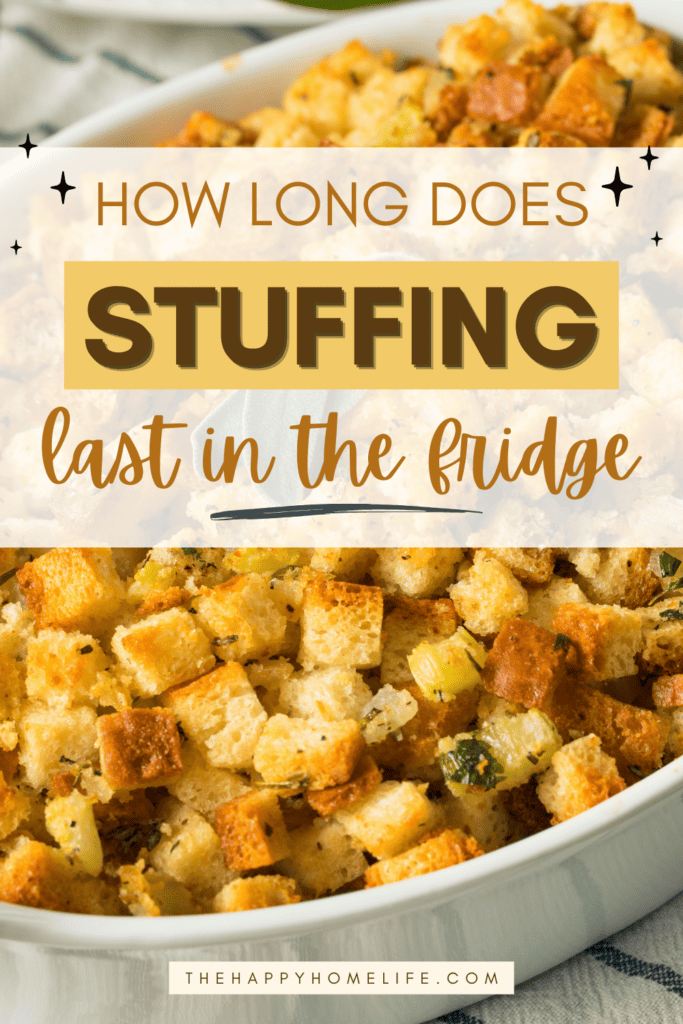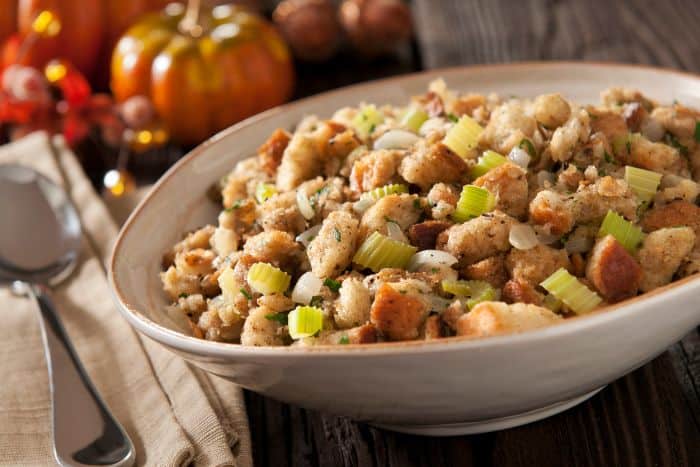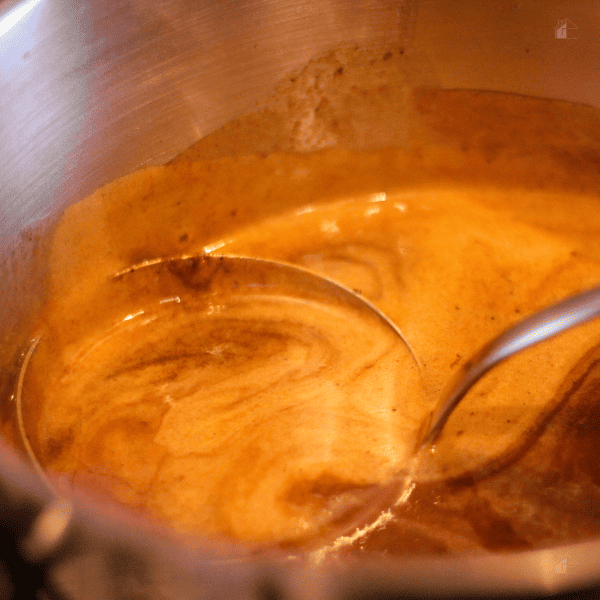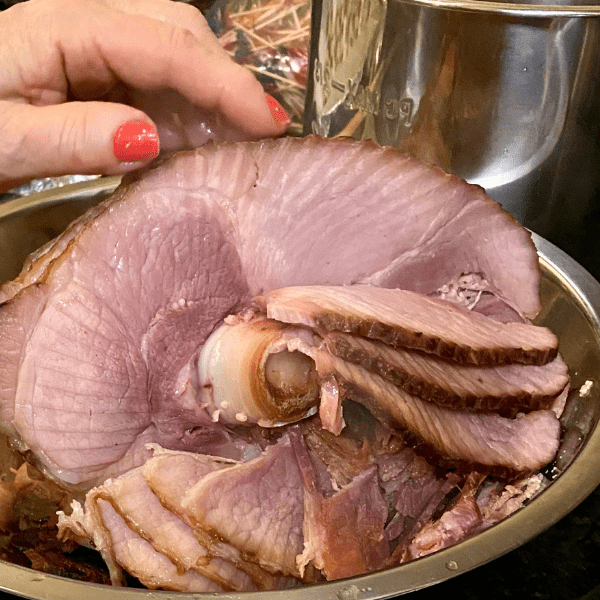Have you ever found yourself staring at a container of leftover stuffing in the fridge, wondering, “Is this still good to eat?” You’re not alone! Stuffing is one of those dishes that seems to multiply after family dinners, and it’s just too tasty to waste. But how long can it safely hang out in your fridge before you have to say goodbye?
Knowing the shelf life of stuffing isn’t just about avoiding waste; it’s also crucial for keeping your family safe from foodborne illnesses. In this post, we’re going to answer that burning question: “How Long Does Stuffing Last in the Fridge?”

We’ll explore food safety basics, factors that affect stuffing’s shelf life, and even share some tips on how to extend its lifespan. So, let’s get started and make sure that the only thing your stuffing is full of is flavor—not bacteria!
Factors That Affect How Long Stuffing Can Last
Alright, let’s get into the nitty-gritty, shall we? Not all stuffing is created equal, and several factors can influence how long it stays fresh and tasty in your fridge. Knowing these can help you make informed decisions and keep your family safe. So, let’s break it down!
Ingredients
First up, the ingredients you use in your stuffing can play a big role in its shelf life. For instance, stuffing made with fresh herbs and vegetables may spoil faster than one made with dried herbs and fewer veggies. Dairy products like cream or cheese can also shorten the lifespan of your stuffing.
Storage Conditions
The conditions under which you store the stuffing are crucial. Always aim to keep your fridge at or below 40°F (4°C). Make sure to store the stuffing in an airtight container to prevent moisture loss and protect it from other odors and flavors in the fridge. The quicker you get it into the fridge after the meal, the better!
Presence of Meat
Meat changes the game, folks! If your stuffing includes meat—like sausage or giblets—you’ll need to be extra cautious. Meat can spoil faster than bread and veggies, so stuffing with meat generally has a shorter fridge life.
Leftover vs. Freshly Made
Believe it or not, how long the stuffing has been sitting out during your meal can also affect its shelf life. If it’s been out for more than two hours at room temperature, bacteria can start to multiply rapidly, making it unsafe to eat later on.
Cross-Contamination
Last but not least, be mindful of cross-contamination. If you’re using the same utensils for different dishes or not storing the stuffing properly, you could introduce bacteria that will make it spoil faster.

How Long Does Stuffing Last in the Fridge?
Let’s get to the main event—the answer to our burning question! You’ve got that delicious stuffing sitting in your fridge, and you’re wondering, “How many days do I have before this turns into a science experiment?” Well, let’s unravel the mystery!
Freshly Made Stuffing
If you’ve just whipped up a batch of stuffing and are storing it immediately, you’re in luck! Freshly made stuffing that goes straight into the fridge can last up to 3 to 4 days. But remember, this is assuming you’ve followed all the best practices for food safety, like cooling it to room temperature before refrigerating.
Leftover Stuffing
Now, what about the stuffing that’s been sitting out during your family dinner? If it’s been out for less than two hours at room temperature, you can safely store it in the fridge for 3 to 4 days as well. However, if it’s been out for more than two hours, it’s best to play it safe and toss it out. Sorry, I know it hurts to waste food, but better safe than sorry!
Signs of Spoilage
So how do you know if your stuffing has crossed over to the dark side? Look out for these signs:
- Smell: A sour or unpleasant odor is a big red flag.
- Mold: Any visible mold means it’s time to say goodbye.
- Texture: If it’s gotten slimy or excessively mushy, that’s a no-go.
Tips for Extending the Life of Your Stuffing
So, you’ve made a mountain of stuffing and you’re determined to enjoy it for as long as possible—without compromising on taste or safety. There are some tried-and-true ways to extend the shelf life of your stuffing.
Proper Storage
- Airtight Containers: The first rule of stuffing storage is to use airtight containers. This keeps moisture in and bacteria out. Bonus points if you can divide the stuffing into smaller portions, so you only have to reheat what you’ll eat.
- Label and Date: Take a moment to label your container with the date it was made. This way, you won’t have to play the guessing game later on.
Freezing Option
- Freeze It: Yes, you can freeze stuffing! If you know you won’t eat it within the 3 to 4-day fridge window, pop it into the freezer. It can last up to a month there!
- Thaw Safely: When you’re ready to enjoy your frozen stuffing, thaw it in the fridge for several hours or even overnight. Never thaw it at room temperature, as this can encourage bacterial growth.
Reheating Tips
- Oven Is Best: For the tastiest results, reheat your stuffing in the oven. This helps it retain its texture and flavor. A quick 20-30 minutes at 350°F should do the trick.
- Microwave in a Pinch: If you’re short on time, you can use the microwave. Just be aware that the texture might be a bit softer.
- Check Temperature: Whether you’re using the oven or microwave, make sure the internal temperature of the stuffing reaches at least 165°F (74°C) on a food thermometer to ensure it’s safe to eat.

Frequently Asked Questions
We’ve covered a lot of ground, but I know you’ve still got questions. Don’t worry, I’ve got you covered! Here are some of the most frequently asked questions about stuffing and its shelf life.
Can I eat stuffing that’s been in the fridge for a week?
Let’s be real—life gets busy, and sometimes we forget about that container of stuffing hiding in the back of the fridge. If it’s been a week, it’s best to err on the side of caution and toss it. Remember, safety first!
Is it safe to eat stuffing that has meat in it after a few days?
Great question! If your stuffing has meat, it generally has a shorter shelf life. Stick to the 3 to 4-day rule, and always check for signs of spoilage like off smells or changes in texture.
How do I know if my stuffing has gone bad?
Trust your senses! If the stuffing smells sour, has visible mold, or the texture has turned slimy or mushy, it’s time to say goodbye. When in doubt, throw it out!
Can I freeze stuffing that has meat in it?
Yes, you can! Just make sure to freeze it as soon as possible to preserve its quality. When you’re ready to eat, thaw it in the fridge and reheat to an internal temperature of 165°F (74°C).
What’s the best way to reheat frozen stuffing?
The oven is your best friend here. Preheat to 350°F and bake for 20-30 minutes. Make sure the internal temperature reaches 165°F to ensure it’s safe to eat. Cover it with foil if you’re worried about it getting too toasty.
Well, there you have it—the ultimate guide to stuffing and its shelf life! Now you can confidently navigate the post-dinner landscape, knowing exactly how to store, freeze, and reheat this delicious dish. No more second-guessing or sniff tests needed!
Remember, when it comes to food safety, it’s always better to be safe than sorry. So go ahead, enjoy that scrumptious stuffing for days to come, but do it wisely!






